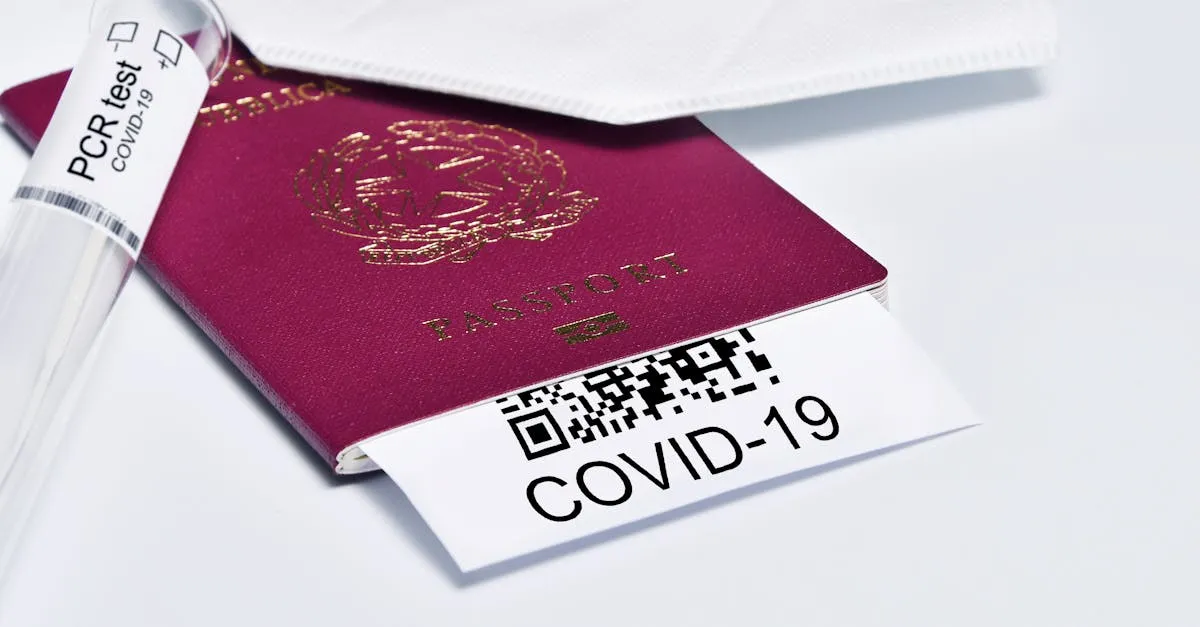Introduction to Global Entry and TSA PreCheck
Traveling can sometimes be a stressful experience, especially when faced with long airport security lines and customs procedures. Luckily, programs like Global Entry or TSA PreCheck offer ways to speed up these processes significantly, turning airport hassle into a smoother journey. Here at Viajante Seguro, we want to help you understand what these trusted traveler programs are all about and help you decide which one fits your travel style best.
Both Global Entry and TSA PreCheck are designed for low-risk travelers who seek faster screening times at U.S. airports, but each serves a slightly different purpose and travel scenario. Global Entry mainly focuses on speeding up customs and immigration for international arrivals back into the United States, making it perfect for frequent global travelers. On the other hand, TSA PreCheck offers expedited security screening for domestic and some international flights departing within the U.S., allowing participants to breeze through checkpoints without removing shoes, laptops, or belts.
So, the key question is: which program suits your needs better? Are you mostly flying within the U.S., or do your trips often involve international borders? Understanding these distinctions is crucial since applying for global entry or tsa precheck can save you a lot of time and headaches at the airport. For official details about how these programs differ, you might find this resource helpful: TSA’s explanation of Global Entry vs. TSA PreCheck.
If you want to delve deeper into what each program offers and steps to apply, there are great guides available explaining the process, like how to navigate TSA PreCheck application procedures or insights on Global Entry interviews. These resources can be invaluable when preparing for your trusted traveler status.

Key Differences Between Global Entry and TSA PreCheck
When deciding between global entry or tsa precheck, it helps to understand what each program offers and how they differ in benefits, costs, and application requirements. Both programs are designed to make travel easier through expedited screening, but the scope and perks vary significantly.
First, Global Entry includes TSA PreCheck benefits but adds a crucial feature for international travelers: accelerated customs and immigration processing upon returning to the U.S. This means if you frequently cross borders, Global Entry can save you long waits at customs, allowing you to use automated kiosks and skip tedious lines. In contrast, TSA PreCheck strictly focuses on domestic and some eligible international departures, speeding up airport security by letting you keep on shoes, belts, and laptops during screening.
Feature | Global Entry | TSA PreCheck |
|---|---|---|
Primary Benefit | Fast customs & immigration on international arrivals + TSA PreCheck access | Expedited airport security for domestic & select international flights |
Cost | $100 for 5 years | $85 for 5 years |
Application Process | Online application + in-person interview + valid passport and/or permanent resident card | Online application + possibly in-person appointment (no passport required) |
Renewal | Required every 5 years with potential interview update | Required every 5 years, mainly online |
Now, let’s talk about application details. While both programs require an online application, Global Entry applicants must attend an in-person interview and provide proof of citizenship, such as a valid passport or permanent resident card. This step helps ensure travelers qualify as low-risk. TSA PreCheck typically has a simpler application process, with some applicants mandated to complete a brief enrollment appointment that does not usually require a passport.
Considering the costs, Global Entry’s application fee is slightly higher at $100 for five years, but it covers TSA PreCheck as well — making it a better deal if you often travel internationally. TSA PreCheck’s $85 fee applies solely for expedited security benefits within the U.S. airports, ideal for frequent domestic flyers who do not travel abroad.
Curious about which program really fits your itinerary? If your journeys often cross borders, the customs convenience that Global Entry offers will likely outweigh the additional steps during application. On the other hand, if you mainly fly within the U.S., TSA PreCheck can still provide a hassle-free security experience.
For more detailed insights on Global Entry’s benefits and interview tips, check out this practical Global Entry interview guide. Looking for a step-by-step walkthrough to apply for TSA PreCheck? This application guide simplifies the process.
Understanding these differences ensures you pick the trusted traveler program that truly suits your travel style and helps you breeze through airports with ease.
Benefits of TSA PreCheck
Have you ever imagined going through airport security without the hassle of removing your shoes, belts, or taking out your laptop? That’s precisely what TSA PreCheck offers—an expedited screening experience that dramatically cuts down your wait time while enhancing convenience. This program is designed specifically to streamline the security process for domestic flights, appealing to travelers looking for a fuss-free airport journey.
One of the standout advantages of TSA PreCheck is its ability to keep everyday travel items like liquids and electronics inside your carry-on bags. Instead of the usual ordeal of unpacking and repacking at the security checkpoint, you simply move through with minimal interruptions. This faster screening allows you to breeze past long lines that often frustrate travelers during peak hours.
Looking at numbers, passengers with TSA PreCheck typically spend less than 5 minutes in security lines, a drastic improvement compared to the average wait times of over 20 minutes for regular screening. This means you can arrive closer to your departure time, reducing the stress of early airport arrivals and allowing more time for last-minute essentials or grabbing a coffee.
Benefit | How It Helps You |
|---|---|
Keep Shoes & Belts On | Avoid removing and packing, speeding up the process |
Laptops Stay in Bags | No need to take out electronics, reducing hassle |
Liquids Remain Packed | Skip unpacking small bottles during screening |
Shorter Wait Times | Typical lines under 5 minutes vs. 20+ minutes regular |
Available at Most US Airports | Convenience almost everywhere you travel domestically |
This improved flow and simplified screening not only save time but also make the entire airport experience less stressful and more predictable. If you fly frequently within the United States and prefer a smoother path through security, TSA PreCheck can be a game changer for your travel routine.
To explore how these benefits come together in practice, check out this detailed overview of TSA PreCheck advantages. Want to understand how TSA PreCheck improves airport security steps even further? This airport security guide sheds light on the process.
In addition, the official CBP TSA PreCheck page explains eligibility, coverage, and more so you can see if it fits your travel profile.
Ultimately, TSA PreCheck offers speed and convenience tailored to those focused on domestic travel, making it easier to navigate airports with less hassle and more confidence.

Benefits of Global Entry
If you often travel internationally, you probably know how time-consuming customs and immigration lines can be after long flights. That’s where Global Entry comes into play. This trusted traveler program offers all the perks of TSA PreCheck—such as faster airport security lines for domestic flights—plus a seamless, expedited process when returning to the U.S. from abroad.
When you arrive at a U.S. airport, Global Entry participants skip the traditional passport control queues by using self-service kiosks. Instead of waiting in long lines, you scan your passport, provide a fingerprint, and complete a simple customs declaration electronically. The kiosk then issues a receipt that you show to the officer before exiting. This process helps reduce wait times significantly and makes re-entry much quicker and less stressful.
Moreover, Global Entry is not limited to airports. It also speeds up border crossings at land ports of entry between the U.S. and Canada or Mexico. Those enrolled enjoy faster processing through dedicated lanes, avoiding lengthy stops even for routine crossings.
Feature | How It Benefits You |
|---|---|
Includes TSA PreCheck | Saves time during domestic flights with expedited security screening |
Customs Kiosk Processing | Fast, self-service immigration at airports reduces wait lines |
Land Border Expedited Entry | Dedicated lanes for quicker crossing between U.S., Canada, and Mexico |
Low-Risk Traveler Status | Pre-approval based on background check speeds up approvals |
Are you wondering if Global Entry is worth it? Besides speeding up airport processes, it provides peace of mind knowing you belong to a program designed for travelers who want to breeze through security and customs alike. The official CBP Global Entry page offers detailed insights on eligibility and application steps.
To better understand how Global Entry complements TSA PreCheck and why frequent international flyers appreciate this program, check out our deep dive on Global Entry essentials. Also, the official TSA guidance explains the differences and specific benefits of these programs clearly.
In short, Global Entry streamlines your international travel from arrival to domestic transit with time-saving advantages that make every trip smoother and less stressful.
Choosing Between Global Entry and TSA PreCheck
Deciding between Global Entry or TSA PreCheck can feel tricky if you’re not sure which one fits your travel style better. It really boils down to how often you travel internationally versus domestically, and how much value you place on expedited customs versus quicker security lines.
If you frequently cross international borders or take flights returning to the U.S. from abroad, Global Entry often stands out as the smarter choice. Thanks to its streamlined customs and immigration kiosks, it vastly reduces waiting times after international arrivals. On the other hand, TSA PreCheck focuses on speeding up security screening for domestic flights and certain international departures without the customs benefits.
Consider also your location and convenience. Enrollment centers for Global Entry might be less accessible in some areas compared to TSA PreCheck centers, which tend to be more widespread. If visiting an enrollment center is challenging or time-consuming, TSA PreCheck may be easier to obtain and renew. For more on enrollment options, explore this detailed guide to TSA PreCheck enrollment centers.
To help clarify your choice, here are some pointers:
Factor | Global Entry | TSA PreCheck |
|---|---|---|
International Travel Frequency | Ideal for frequent international travelers | Best for mostly domestic flyers |
Customs & Immigration | Includes expedited customs re-entry | No customs benefit |
Security Screening Speed | Includes TSA PreCheck benefits | Speeds up security for domestic and some international flights |
Enrollment Center Access | Fewer locations, may require travel | Wider availability, more convenient |
Application Cost | Higher fee, valid for five years | Lower fee, also valid five years |
Ultimately, if your journeys often take you overseas, Global Entry’s comprehensive perks usually provide the best value. But if you mostly fly within the U.S. and want a hassle-free security experience, TSA PreCheck might be enough. Many travelers even find it worthwhile to enroll in both for full coverage.
For deeper insights on how these programs compare, the official TSA site offers a clear explanation of differences between Global Entry and TSA PreCheck. Additionally, you can check out this comprehensive Trusted Traveler Programs portal for detailed enrollment information.
So, take a moment to consider your travel habits, enrollment convenience, and the kind of benefits you truly need. This way, you’ll pick the program that suits your adventures best, making every trip smoother and more enjoyable.

Cost Considerations and Credit Card Reimbursements
When deciding between Global Entry or TSA PreCheck, it’s essential to think about the costs involved and how you might offset them. Both programs require an application fee valid for five years—Global Entry’s fee is generally higher, reflecting its extended benefits, whereas TSA PreCheck has a lower fee but offers expedited security mainly within domestic travel.
Luckily, many popular travel credit cards now include fee reimbursements for these programs as a perk. For example, some premium cards designed for frequent travelers automatically credit the cost of one application (either Global Entry or TSA PreCheck) once per five-year membership period. This can significantly reduce your upfront expense and make joining these programs more affordable.
Here are some common travel rewards cards that often provide this reimbursement feature:
Chase Sapphire Reserve®
American Express® Platinum Card
Citi Prestige® Card
Capital One Venture Rewards Credit Card
U.S. Bank Altitude® Reserve Visa Infinite® Card
The reimbursement process is usually straightforward: after you pay the application fee directly to the trusted traveler program (via official government websites or enrollment portals), you submit the charge to your credit card. The card issuer then automatically refunds that fee as a statement credit, typically within a few days or billing cycles, depending on the bank’s processing times.
Also, some airline frequent flyer programs partner with these travel programs to offer discounts or partial reimbursements depending on your loyalty status—so it’s worth checking your airline benefits too. For a full overview of TSA PreCheck application rules and how to apply efficiently, see this complete TSA PreCheck application guide.
Ultimately, if you want to maximize value while minimizing out-of-pocket costs, pairing your Global Entry or TSA PreCheck enrollment with the right credit card can be a clever move. This way, you enjoy hassle-free travel perks without stretching your budget.
Application Process for Global Entry and TSA PreCheck
Are you wondering how to apply for Global Entry or TSA PreCheck? Both programs simplify travel but have distinct application journeys. Understanding each step can save you time and help avoid common pitfalls.
The process for Global Entry begins with submitting an online application through the official Trusted Traveler Programs (TTP) portal, managed by the Department of Homeland Security. After completing the extensive background check and receiving conditional approval, you’ll schedule an in-person interview at one of the designated enrollment centers. This interview typically involves fingerprinting and identity verification. Since Global Entry’s main benefit is expedited U.S. customs processing for international travelers, its interview locations are available at many major airports and other federal sites across the country. You can check specific enrollment center listings and appointment availability online to plan accordingly.
On the other hand, TSA PreCheck has a somewhat simpler application. Applicants can also apply online via the TTP portal but must visit an enrollment center for a quick in-person appointment, which usually takes about 10 minutes. Unlike Global Entry, TSA PreCheck interviews primarily confirm identity, collect fingerprints, and perform background checks focused on domestic airport security screening. Enrollment centers for TSA PreCheck are widely available at airports and some off-airport locations, making it generally easier to find convenient spots to complete your appointment.
One notable difference lies in renewing memberships. While TSA PreCheck renewal can often be completed fully online depending on eligibility, Global Entry renewals sometimes require another interview, though recent updates aim to streamline this for returning members. Both programs require re-screening as part of the renewal to ensure continued eligibility.
Feature | Global Entry | TSA PreCheck |
|---|---|---|
Application Method | Online via Trusted Traveler Programs portal | Online via Trusted Traveler Programs portal |
Background Check | Comprehensive federal background screening | Focused on domestic security clearance |
Interview Required | Yes, in-person, with fingerprinting | Yes, brief in-person appointment with fingerprinting |
Enrollment Locations | Major airports and federal sites nationwide | Many airports and off-airport enrollment centers |
Renewal Options | Online renewal possible; interview sometimes required | Often eligible for complete online renewal |
Thinking about which enrollment center is easiest for you? Visiting the official TTP website can help you explore all available locations and schedule appointments. It’s a great first step to take before starting your application.
For travelers looking to dive deeper into the TSA PreCheck application steps or how to find nearby enrollment centers, plenty of detailed resources are available to guide you through the process efficiently. Likewise, if speeding through border control on international flights appeals more, understanding the Global Entry interview and renewal process can make your experience much smoother on future trips.
By choosing the right program and knowing exactly how to apply, you unlock faster, hassle-free journeys time and time again.
Conclusion: Making the Right Choice
Deciding between Global Entry or TSA PreCheck ultimately depends on your travel patterns and priorities. Both programs are designed to enhance your airport experience, but they serve somewhat different purposes. If international trips are frequent in your itinerary, Global Entry offers a remarkable advantage by significantly speeding up customs and immigration processes when returning to the U.S., as officially detailed by the CBP. This can translate into less waiting and more peace of mind after long flights.
Conversely, TSA PreCheck focuses on expediting security screening for domestic and international flights departing within the United States. It allows travelers to breeze through checkpoints without the hassle of removing shoes, belts, or laptops. This streamlined process enhances convenience and saves time—benefits highlighted on the official TSA PreCheck page.
So, how to make the right choice? First, ask yourself how often you travel internationally versus flying only within the U.S. Also, consider how much time you spend in security lines and customs. For many, having both programs covers nearly every travel scenario. However, if you’re looking for a simpler, more affordable way to speed up domestic travel, TSA PreCheck is often the go-to.
Remember, exploring in detail each program’s application and renewal steps can clarify which fits better with your schedule—our recommendations include checking official resources like the Trusted Traveler Programs portal and reading personal user experiences on forums such as Reddit to gather practical insights.
Ultimately, the smartest decision is the one that aligns with how you travel. Whether you prioritize hassle-free customs or faster security checks, understanding the differences between Global Entry and TSA PreCheck empowers you to travel smarter, saving time and reducing stress. Our team encourages you to assess your personal needs carefully to unlock benefits tailored just for you.
For more tips and detailed guides to help you navigate these trusted traveler options, feel free to explore further articles that dive deep into each program’s unique advantages and application tricks. Travel easier—choose wisely!



